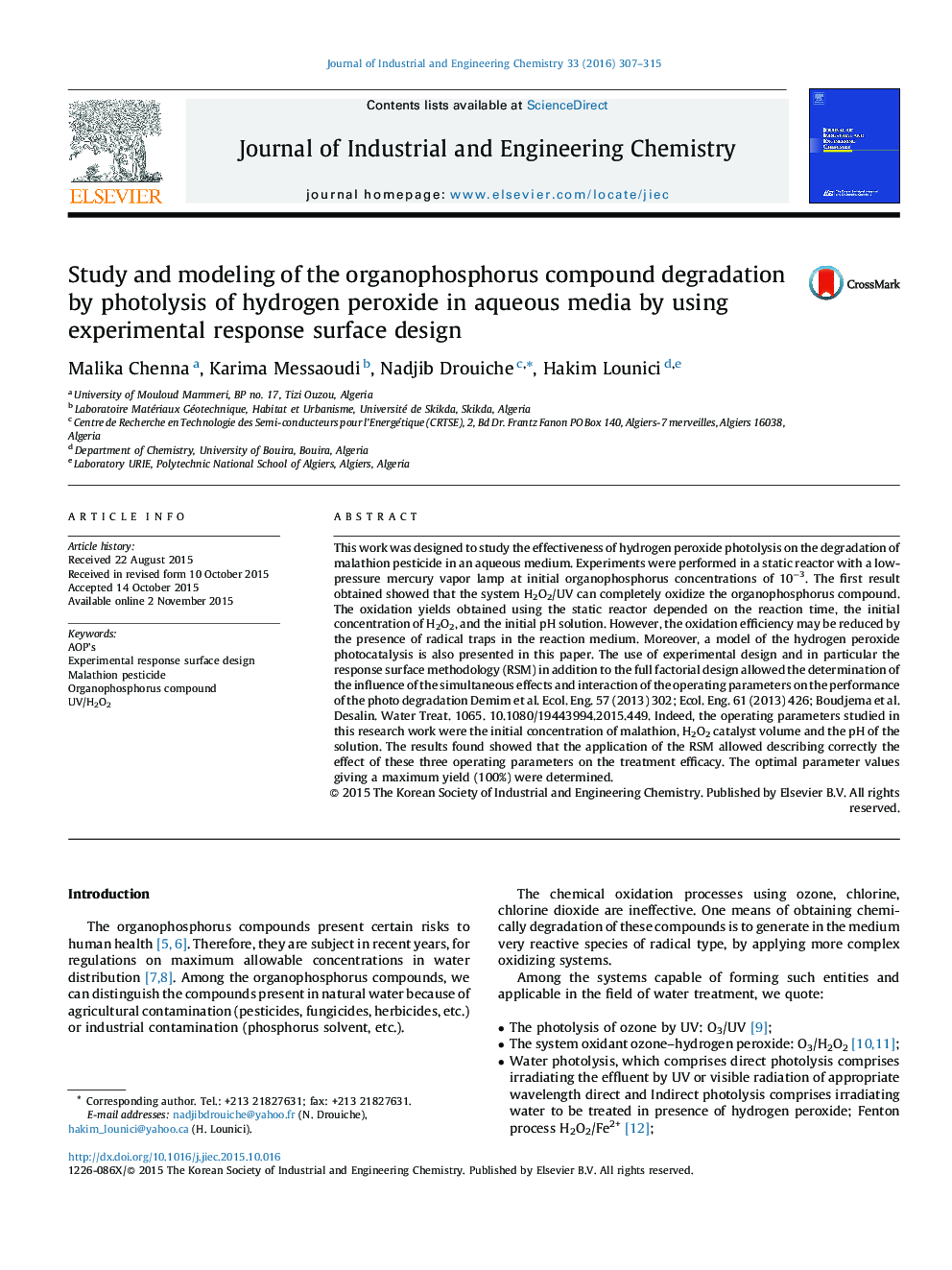| Article ID | Journal | Published Year | Pages | File Type |
|---|---|---|---|---|
| 226864 | Journal of Industrial and Engineering Chemistry | 2016 | 9 Pages |
•Malathion pesticide is a toxic compound.•Effectiveness of hydrogen peroxide photolysis on the degradation of Malathion was studied.•H2O2/UV can completely oxidize the organophosphorus compound.•The influence of the simultaneous effects was optimized by response surface methodology.
This work was designed to study the effectiveness of hydrogen peroxide photolysis on the degradation of malathion pesticide in an aqueous medium. Experiments were performed in a static reactor with a low-pressure mercury vapor lamp at initial organophosphorus concentrations of 10−3. The first result obtained showed that the system H2O2/UV can completely oxidize the organophosphorus compound. The oxidation yields obtained using the static reactor depended on the reaction time, the initial concentration of H2O2, and the initial pH solution. However, the oxidation efficiency may be reduced by the presence of radical traps in the reaction medium. Moreover, a model of the hydrogen peroxide photocatalysis is also presented in this paper. The use of experimental design and in particular the response surface methodology (RSM) in addition to the full factorial design allowed the determination of the influence of the simultaneous effects and interaction of the operating parameters on the performance of the photo degradation Demim et al. Ecol. Eng. 57 (2013) 302; Ecol. Eng. 61 (2013) 426; Boudjema et al. Desalin. Water Treat. 1065. 10.1080/19443994.2015.449. Indeed, the operating parameters studied in this research work were the initial concentration of malathion, H2O2 catalyst volume and the pH of the solution. The results found showed that the application of the RSM allowed describing correctly the effect of these three operating parameters on the treatment efficacy. The optimal parameter values giving a maximum yield (100%) were determined.
